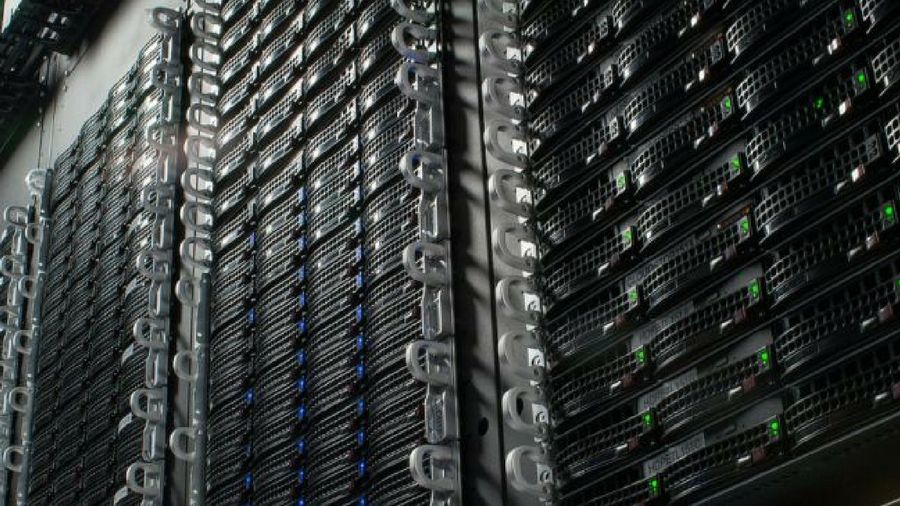Making sense of Seagate's decision to tackle the Data Center Interconnect market
Seagate's Alex Worrall speaks about the optical network market, why the company, better known for its hard drive business, is investing in this area as well as future opportunities for data center interconnect.

Alex Worrall, Senior Engineering Director, Cloud Systems & Silicon Group, Seagate Technology speaks about the optical network market, why the company, better known for its hard drive business, is investing in this area as well as future opportunities for data center interconnect.
Can you provide a global overview of the optical network market? And how has the market grown over the years?
Right now, it is an incredibly exciting time for the optical network market. Internet content and Cloud Service Providers are taking advantage of data center interconnect (DCI), as they build out their data centers, and are gaining significant purchasing power in this important new market segment.
What’s more, with so many major tech companies actively interested in optical interconnect for their future data centers, there is currently a lot of activity taking place within the industry to help make it commercially viable.
If we look at the market in terms of monetary value Ovum reports that revenues for DCI equipment have surpassed $3 billion. And by 2019, the rapidly growing demand to interconnect data centers will help the optical network equipment market grow by 3 per cent annually to reach $17 billion.
Why is there growing demand for interconnect within data centers?
The rate at which data cent res are being built, the amount of equipment being housed within them, and the increasing speeds and distances data has to travel are all driving demand for DCI. Information is the lifeblood of a business and it must be stored, protected and be easily accessible.
However, as data volumes grow it is becoming increasingly necessary to move storage off premise and into the data center. Therefore companies are looking to rapidly connect different sites, on a global scale; particularly as it allows for workload sharing as well as pooling data center resources together to meet scalability needs. This drives the need for more performance within a given data center.
A key driving factor is so called “east-west” traffic, which accounts for around 78% of data center traffic, as data is moved between systems within the data center. This can be for a number of purposes that can range from complex big data analytics to simple storage tiering.
Are you a pro? Subscribe to our newsletter
Sign up to the TechRadar Pro newsletter to get all the top news, opinion, features and guidance your business needs to succeed!
By 2020, 44ZB of data will be created, of which 13ZB will need to be stored, however the amount of data that installed capacity will be able to hold will only be 6.5ZB.
A consequence of the continuing proliferation of mobile devices coupled with the exponentially increasing demand in data capacity and performance is pushing the industry to a bottleneck, where traditional data center infrastructures will struggle to support the required level of information migration from local client side operations to exascale cloud environments.
Which companies are specifically investing in this type of project?
Internet content providers - whose primary business is the creation, storage, and dissemination of digital information – and carrier-neutral providers are the main players currently spending heavily on data center infrastructure, including optical transmission hardware.
The end user is then typically large enterprises such as banks, healthcare companies, retail and manufacturing companies that need to securely backup and replicate mission-critical data and applications between multiple locations.
It is now common for network interconnect within the data center to be all optical - as data signals can be carried at higher speeds, over longer distances, in a denser packaging solution.
The same challenges of data transmission are now putting pressure of the internal signal paths of systems.
This has led Seagate, and other companies, to look at how to move optical interconnect into the storage or server enclosure, replacing electrical “wires” with optical “wires” in the form of fibres or waveguides coupled to silicon photonics devices.
These Embedded Photonics components and interconnect are being productized by a number of companies, but need to be brought together at the system level to ensure a cohesive ecosystem can be developed.
One project that Seagate is currently involved with is a collaboration with the Photonics Electronics Technology Research Association in Japan (PETRA).
PETRA is developing world-leading photonics devices, packaging and integration technologies. Its main focus at the moment is creating disruptive silicon photonics interconnect technologies to make it commercially viable for large scale deployment in future exascale data centers.
How exactly does the technology work?
The key enabling technology required for the widespread deployment and expansion of optical interconnect inside systems is the optical transceiver, which converts electronic signals to optical signals and vice versa.
There are two different routes to realizing affordable commercially viable optical transceivers. One is through direct modulation of low cost diode lasers, such as VCSELs.
The other is through photonic integrated circuits, which is a more complex approach, but allows multiple functions to be accommodated in a single chip, including not only modulation of optical signals, but also optical switching, wavelength division multiplexing / de-multiplexing and sensing.
As a world leading technology innovator, it makes sense for Seagate to partner with world leaders in these emerging technology fields to fully explore the potential and viability of these new technologies within the various markets, which we serve.
To this end we are partnering with PETRA in Japan, HDPuG in the USA and participating in a number of European projects including PhoxTrot, Nephele and COSMICC.
Why is Seagate, a company better known for storage/hard disk drives, investing in optical interconnect?
It’s vital that we’re always looking for new ways and initiatives to expand our storage systems offerings. That’s why we’re proud to be one of the first systems companies to have partnered with PETRA in this field.
There is a pressing need for data center architectures to evolve to provide more flexible control of system configurations to eliminate underutilization of compute and storage resources, minimize latency for “east-west” communication and support linear scalability of performance as new equipment is installed.
The two key enablers for this are advanced network management (Software Defined Networking) coupled with affordable optical.
We are already seeing the increased focus on optical interconnect for emerging architectural paradigms such as the Disaggregated Rack-Scale Server (DRS) architecture, the goal of which is to separate computing, storage and communication hardware components within the rack and the interconnection between them becoming an optically connected distributed switching function.
The speed and density requirements of this type of architecture align well with the capabilities of embedded photonics solutions.
What are some of the future opportunities for DCI?
The data center interconnect market traditionally focused on near real-time disaster recovery and business continuity between sites and has typically been driven by two concerns - bandwidth and latency.
Now, a number of market factors are redefining the DCI market. The rapid gains in data center efficiency, the emergence of mega data centers, the impact of cloud computing, as well as the virtualization of data center architecture and software-defined networking mean large enterprises need to consider new approaches to meet their current and future DCI needs.
In answer to this requirement for increased speed and capacity, the Ethernet market is one that has seen substantial growth in recent years with the progression from 10G to 100G in a relatively short space of time. IHS Infonetics predicts that by 2019, 100-gigabit-per-second (100G) Ethernet will make up more than 50 percent of data center optical transceiver transmissions.
What do all of these technologies and innovations represent? They represent an opportunity for companies to offer the fast, reliable and secure delivery of a rapidly increasing amount of data.
From the Super Computers of the Oil & Gas industry, processing huge data sets of geological survey data, to improved weather simulations and forecasting of Meteorological institutes and the data lakes of Cloud Content Providers, the demands of data storage performance continue to increase, requiring innovations to keep pace with demand.
- Check out the best dedicated servers

Désiré has been musing and writing about technology during a career spanning four decades. He dabbled in website builders and web hosting when DHTML and frames were in vogue and started narrating about the impact of technology on society just before the start of the Y2K hysteria at the turn of the last millennium.
Most Popular








